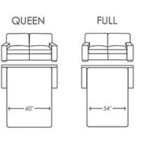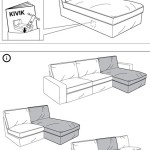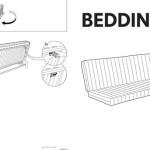How to Replace Springs in a Sofa
Replacing springs in a sofa can be a daunting task, but with the right tools and guidance, it is achievable. This article will provide a step-by-step guide for replacing springs in a sofa, highlighting key points and crucial considerations.
1. Preparation and Safety
Before embarking on replacing sofa springs, proper preparation and safety measures are essential.
First, ensure that the sofa is in a well-ventilated area, free from obstructions. Remove any cushions or loose covers to provide access to the underlying frame and springs. It is advisable to have a helper for this task, particularly when moving the sofa itself.
Next, gather the necessary tools: a screwdriver set, a wrench, a staple gun with staples, pliers, a hammer, and a measuring tape. Wear safety glasses and work gloves to protect yourself from potential injuries.
2. Identifying and Removing Existing Springs
The first step is to identify and remove the existing springs. This process requires careful examination and understanding of the sofa's construction.
Start by inspecting the underside of the sofa. The springs can be attached to the frame using various methods – clips, hooks, or staples.
For clip-on springs, gently pry them off the frame using a screwdriver or pliers. For hook-on springs, disengage the hooks from their attachments. For staple-secured springs, carefully remove the staples using pliers or a staple remover. Take note of the arrangement of the springs, as it will be essential for reinstalling the replacements.
3. Selecting and Installing New Springs
Once the old springs are removed, it is time to select and install new ones. The choice of springs depends on the sofa's size, weight, and intended use.
There are several types of sofa springs available:
- Coil Springs: The most common type, offering good support and durability.
- Zigzag Springs: Used for lighter sofas and can be easily installed.
- No-Sag Springs: Provide superior support and are typically found in high-end sofas.
Consult with a furniture professional or a specialized hardware store to determine the right spring type for your sofa.
After selecting the new springs, install them following the same arrangement as the original springs. Secure them to the sofa's frame using the appropriate method - clips, hooks, or staples. Ensure a tight and secure fit to prevent sagging or popping.
4. Final Touches and Testing
Once all new springs are installed, it is time to complete the process by reattaching the sofa's upholstery and testing its stability.
Carefully staple or screw back the upholstery fabric, ensuring it is tightly secured to the frame. Replace all cushions and covers.
Finally, sit on the sofa to test its comfort and stability. If any of the springs feel loose or if there is any sagging, adjust them accordingly.
Replacing sofa springs involves a process that demands patience, attention to detail, and the use of appropriate tools. It is a project that can be successfully tackled with proper preparation, understanding of the involved steps, and a little bit of time.

How To Fix The Springs On Saggy Sofa Diy Furniture Studio

How To Fix The Springs On Saggy Sofa Diy Furniture Studio

Fix Broken Sofa Springs Learn How To Diagnose And

The Fastest Repair For Loose Springs In Your Sofa

The Fastest Repair For Loose Springs In Your Sofa

Pin On Upholstery

How To Put Springs On A Sofa Alo Upholstery

How To Fix The Springs On Saggy Sofa Diy Furniture Studio

Sinking Sofa Seat Spring Repair The Man

3 Ways To Fix A Sagging Couch Or Sofa Simple And Easy Diy Springs Foam Supports








